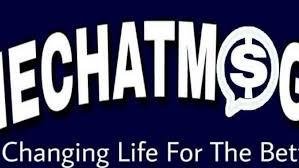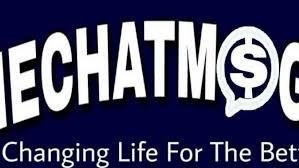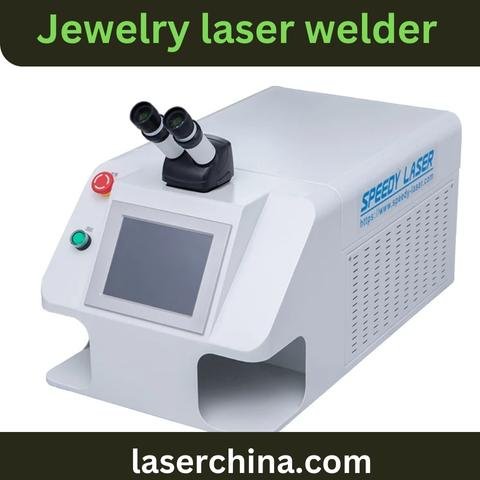When it comes to crafting, repairing, or restoring fine jewelry, precision is everything. Every detail matters, from the exact placement of a tiny gold link to the strength of a microscopic joint holding a gemstone in place. For decades, jewelers relied on traditional soldering techniques using a torch, flux, and filler material. But as demands for finesse and minimal disruption grew, a new tool stepped into the spotlight: the jewelry laser welder.
What makes this piece of technology so different from the torch? Why are seasoned jewelers abandoning their traditional soldering stations and investing in laser welding machines? The answer lies in the invisible difference – the ability of laser welding to create flawless joints with pinpoint accuracy, minimal heat, and near-instant results.
A New Era in Jewelry Crafting
The shift towards using a jewelry laser welder is not a fleeting trend—it’s a reflection of evolving customer expectations and the growing need for precision in a highly competitive market. Consumers today are more informed and meticulous. They look beyond just the sparkle. They want pieces that are not only beautiful but durable, restored with care, and crafted with the highest level of workmanship.
In that context, a jewelry laser welder becomes more than just a machine—it becomes a strategic tool in the jeweler’s workshop.
Unlike torch soldering, where open flame and high heat can affect a wider area of the piece, a laser welder focuses a concentrated beam of energy onto a microscopic point. This means a jeweler can work mere millimeters away from gemstones, delicate patterns, or heat-sensitive areas without risking damage.
The Invisible Edge of Precision
Think of a scenario where a customer walks in with a platinum ring holding an emerald. One of the prongs is loose. With traditional soldering, that emerald has to be removed to protect it from heat damage. This involves extra time, additional cost, and the risk of accidental scratches during gemstone removal.
With a jewelry laser welder, the prong can be reattached without even touching the stone. The laser beam creates a clean weld exactly where needed, preserving the integrity of the entire piece. There’s no need for additional filler material, and the weld often blends so well that it’s invisible to the naked eye.
This level of surgical precision is impossible with a torch. Even the most skilled soldering technician would admit that torch soldering, though traditional and respected, cannot match the level of microscopic control that laser welding provides.
Faster Turnaround, Higher Volume, Better Business
From a business standpoint, time is money. Traditional soldering, while effective, is often slow. Pieces must be cleaned, fluxed, heated, cooled, and cleaned again. Delicate items may require pre-treatment and post-treatment to prevent oxidation or thermal shock. The process adds hours, sometimes even days, to a repair job.
A jewelry laser welder cuts that time significantly. Welds are done in seconds. There's minimal cleanup required, and since the piece remains structurally stable during the process, fewer steps are needed before and after the weld.
For jewelers running a commercial shop, this translates into more jobs done per day. More pieces repaired. More orders completed. And ultimately, higher revenue with fewer resources.
This is especially true during busy seasons—wedding months, the holiday rush, Valentine’s Day—when customers want their pieces ready yesterday. Shops equipped with a jewelry laser welder find themselves at a competitive advantage. They can promise speed and deliver quality simultaneously.
Design Possibilities Unlocked
Laser welding is not just about repairs; it opens doors to creative expression that were previously considered too risky or impractical. Imagine a designer who wants to incorporate ultra-thin filigree patterns into a modern ring design. These elements are too delicate to be handled with a flame—one misstep and the whole piece could melt or warp.
With a jewelry laser welder, these creative ideas are no longer just concepts on paper. The designer can fuse ultra-thin wires, connect dissimilar metals, and reinforce microstructures with a level of control that’s simply not possible using traditional heat-based methods.
This leads to bolder designs, custom commissions, and an elevated customer experience. In many cases, the jewelry laser welder becomes the enabler of artistic freedom, allowing jewelers to push boundaries without compromising quality.
Consistency Without Compromise
Customers expect consistency. Whether it’s a simple chain repair or a complex reconfiguration of an heirloom bracelet, the results must speak for themselves. Manual torch soldering depends heavily on the individual skill of the technician. Variations in flame intensity, temperature, and duration can result in inconsistencies, even for the most seasoned professionals.
The laser welder, however, removes guesswork. Weld settings such as pulse duration, energy level, and focus can be precisely programmed and replicated. This ensures that every weld meets the same standard, whether done once or a hundred times.
That repeatability doesn’t just improve results—it builds trust. Customers notice when the service they receive is always precise, always professional, and always dependable.
Minimal Cleanup, Maximum Aesthetics
Soldering often leaves behind discoloration, fire scale, or oxidation that must be cleaned up through polishing, ultrasonic cleaning, or acid dips. These steps are not only time-consuming but may also risk over-polishing delicate surfaces or intricate designs.
With laser welding, there’s virtually no fire scale. The heat-affected zone is so localized that surrounding areas remain untouched. This is especially critical when working on antique jewelry, where preserving patina and original detailing is paramount.
Repairs done with a jewelry laser welder typically need little to no post-weld cleanup. This helps maintain the original aesthetics of the piece and speeds up job completion.
Training the Next Generation
A growing number of jewelry schools and training institutions now include laser welding as part of their curriculum. This shift indicates that the tool is becoming an industry standard rather than a luxury. New jewelers entering the field are learning how to use a jewelry laser welder as naturally as they learn how to use a polishing wheel or a caliper.
For workshop owners, this means onboarding new staff becomes easier. Weld settings can be saved and reused, creating a repeatable system where even junior bench jewelers can contribute with confidence.
Investment That Pays Off
No discussion about adopting new tools is complete without addressing the cost. It's true that a jewelry laser welder is not the cheapest tool in the shop. However, many jewelers who’ve made the switch report that the investment pays for itself quickly.
Why? Because it increases throughput. It reduces rework. It minimizes the need for additional tools and materials. And it raises the perceived value of the services provided. In a market where word-of-mouth and reputation are everything, being known as a jeweler who can perform “impossible repairs” or “save heirlooms others turn away” becomes a business asset in itself.
Many workshops find that after adopting a laser welder, they not only retain more customers but attract new ones looking specifically for advanced repair capabilities.
Final Thoughts
In the end, the difference between traditional soldering and a jewelry laser welder isn’t just about heat—it's about control, creativity, consistency, and confidence. While torch soldering will always have its place in the jeweler’s legacy, the future belongs to tools that expand what's possible while refining what already works.
If you’re running a jewelry business, whether boutique or large-scale, integrating a jewelry laser welder into your workflow is more than an upgrade—it’s a decision to compete at the highest level of craftsmanship. It allows you to meet your customers' expectations with speed, accuracy, and elegance. And in a world where jewelry is not just worn but treasured, that’s a difference worth making.



